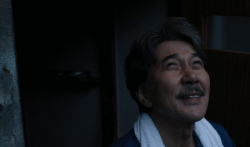In 1964, Life Magazine inquired of pop art icon Roy Lichtenstein, “Is he the worst artist in the U.S.?” While this question might seem both ironic and a moot point in the face of Lichtenstein: A Retrospective, the 15,000-square-foot exhibition now on display at the National Gallery, this query illuminates an important characteristic of Lichtenstein’s work: his uncanny ability to simultaneously “delight and outrage” in his mastery and innovation in the pop art genre.
This unique combination of pleasing and offending runs throughout A Retrospective, as viewers are invited to revel not only in Lichtenstein’s characteristic use of the comic book-style, Ben-Day dots, and the two-dimensional depiction of mass consumer objects, but also in the truly revolutionary nature of his work. As the exhibit progresses from comics to landscapes to nudes and beyond, it astounds in the way it captures the many phases of Lichtenstein’s dynamic career and the artistic style which he made distinctly his own.
A traveling exhibit first displayed at the Art Institute in Chicago Lichtenstein: A Retrospective opened at the NGA on Oct. 14, 2012 and runs until Jan. 13, 2013. The exhibit is the first to survey his career since the artist’s unexpected death of pneumonia at age 73 in 1997.
Impressive for the range of subjects Lichtenstein explored during his prolific career, the exhibit lets the 135 pieces on display speak for themselves—when not using comic book-style blurbs in his pieces, that is. Beyond short descriptions explaining the thematic organization of the exhibition, which is broken up into 14 sections, from “War and Romance” to “Landscapes,” each work is only accompanied by its title. In spite of the dearth of information for viewers, the stark contrast of each piece with the white walls and high ceilings fits well with Lichtenstein’s clean, bright style. Further, the exhibit’s stark arrangement, whether stylistic or an oversight of the curator, is quickly remedied by the comprehensive $5 audio guide.
Though descriptions of his work may be lacking, the exhibit’s layout flows well, whisking visitors around the many rooms and expertly juxtaposing his trademark “War and Romance” pieces such as “M-Maybe,” alongside less stereotypically-Lichtenstein pieces. Consequently, the evolution of works from famous pieces, such as “Look Mickey” (1963) and the “Oh…Alright” comic-esque blue-haired heroine, to his paintings and sculpture on “brush-strokes” to the Chinese inspired landscapes of his late career offer a multifaceted image of the artist. Even in the divergence from the traditional comic book genre, Lichtenstein’s unmistakable stamp on each work ensures continuity despite the subject matter, which allows the viewer to see how his work organically evolved through new forms of experimentation.
The transformation of the Benday dot, for instance, from his early comic pieces to his later abstract works such as “Imperfect Sculpture,” parallels Lichtenstein’s artistic progression. The display of Lichtenstein’s four famous paintings in the “Artist’s Studio” series (1974) best captures this development as Lichtenstein revisits some of his most iconic work by following in the Western artist tradition of painting one’s own studio, drawing inspiration from Henri Matisse’s “Red Studio” and “Pink Studio” in these near life-size depictions.
Reunited for the first time in this exhibition, “Artist’s Studio No. 1 (Look Mickey)” kicks off the exhibition as Lichtenstein satirizes his own work and the comic book-style that made him famous in this rendition of an artist’s studio showcasing “Look Mickey,” “Couch,” and other homages to his earlier work.
The other three panels of “Artist’s Studio” bring Lichtenstein’s personal retrospective in full circle, perfectly complementing the exhibit’s exploration of his relationship with historical figures from Pablo Picasso to George Washington. While each panel of “Artist’s Studio” opens a window into Lichtenstein’s distinct style, the last of the four works, “The Dance,” proves the most intriguing as Lichtenstein parodies Matisse’s “Still Life with Dance,” altering the original work’s composition in his characteristic pop art form.
Other highlights beyond the ubiquitous “War and Romance” series include Lichtenstein’s survey of mirrors as a subject, commenting on the irony of art as a reflection of nature, which for Lichtenstein is utterly depthless. Lichtenstein’s self portrait, a simple t-shirt and a rectangular mirror in place of the head perfectly captures this self referential quality of his work as it evokes a sense of our material culture alongside an impersonality that is distinctly Lichtenstein.
With his status as “the worst artist in America” debunked, A Retrospective affirms the revolutionary nature of Lichtenstein’s work and its enduring ability to reevaluate what constitutes great art.





It would seem that Lichtenstein was even less original than many
of his existing detractors had thought.
http://www.flickr.com/photos/deconstructing-roy-lichtenstein/